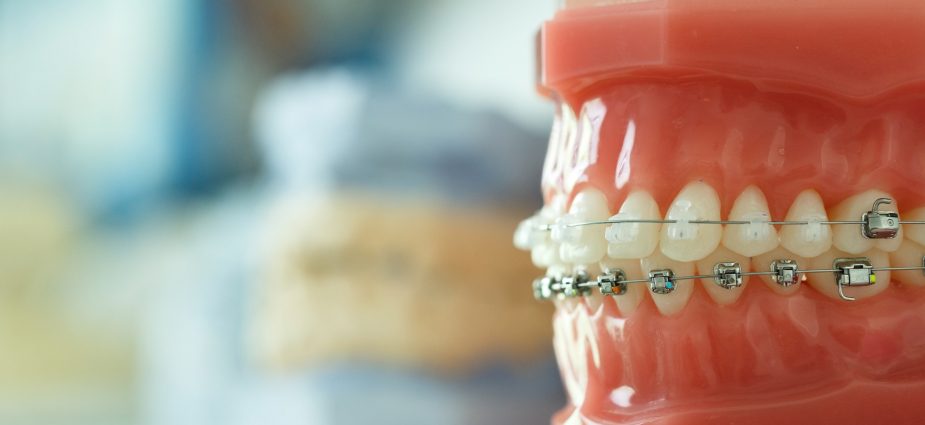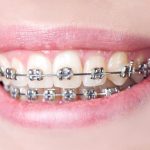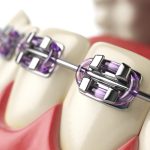Orthodontics: Creating a Well-aligned Smile
Medically Reviewed by: Gary Hirsh, DDS, MS

Close to 30 percent of all orthodontic patients in the United States are adults. Despite this growing trend towards adult orthodontics, it pays to start treatment early for maximum effectiveness. In fact, the American Dental Association recommends that children receive an orthodontic evaluation by age seven.
No matter what your age, orthodontics can protect your bite (occlusion), maximize your teeth’s effectiveness in performing their functions and create a well-aligned smile. Today’s treatments involve repositioning of the teeth and underlying roots, providing better support for the crown of the tooth. Orthodontic treatment can also rejuvenate your facial appearance by reshaping the jaw, neck and lips, especially when combined with maxillofacial surgical procedures. In addition, well-aligned teeth make oral hygiene easier to maintain.
Are You a Candidate?
If you are a candidate for orthodontics, you will likely be referred by your general dentist to an orthodontist for evaluation of your bite. During your first visit, your orthodontist may use several methods to develop an individualized treatment plan, including:
- Oral, facial and functional evaluation (examination).
- Intraoral and facial photographs.
- Panoramic and cephalometric X-rays.
- Impressions for models of the teeth and bite.
An orthodontist reviews your dental records, performs a clinical assessment, takes X-rays of your mouth and head and makes models of the teeth by creating an accurate impression of them. The results of this evaluation are studied in order to formulate the best treatment plan.
Typically during the second visit, the treatment plan is reviewed and an estimate for the number of months required for the active phase of treatment is discussed. (The standard treatment phase is two years.) Following treatment, you may be required to wear a retainer for a period of time.
The duration of orthodontic treatment varies based on your age, the extensiveness of the procedure (some people require more work than others) and how closely you follow your treatment plan. For example, younger patients may respond more quickly to treatment than older patients because the bones supporting young teeth are more pliable than those supporting older teeth. However, adults tend to follow treatment instructions more consistently than pre-teens.
In some cases the treatment time is longer. For example, oral surgery and recovery may be needed before or during treatment.
Finding an Orthodontist
Finding a qualified orthodontist used to be relatively straightforward: your general dentist, probably the one who recommended realignment in the first place, simply gave you a referral. But today, with an increasing variety of straightening procedures available, and with more and more non-specialists offering orthodontic treatments, the choices can be bewildering.
Here are some guidelines to keep in mind when selecting an orthodontist:
Pre-Consultation Considerations
- Your general dentist’s recommendation remains a valuable one. General dentists not only work with orthodontists in coordinating patient care, but also regularly view the results of alignment procedures and can pass their evaluations on to you. If your dentist’s children have or had dental braces, ask which orthodontist they used.
- Ask your friends, neighbors and business colleagues whom they recommend. If the treatment is for your child, check with the teachers’ and parents’ associations at your child’s school.
- Contact a local dental school and ask its orthodontics department which local practitioners they recommend.
- Before you set up a consultation with an orthodontist, make sure he or she is a licensed member of the American Association of Orthodontists, an organization requiring adherence to rigorous training and ethical standards. Members of this organization have completed two to three years of full-time postgraduate classes and clinical work. Once members have their own practice, they must remain up-to-date on research and technological advances.
Your Orthodontic Consultation
When you meet an orthodontist for a consultation, we strongly recommend consideration of the following:
- What is the orthodontist’s level of experience and how long has he been practicing?
- How extensive is the orthodontist’s practice?
- Ask to see before-and-after photos of previous patients. Are the results to your liking?
- How varied and advanced are the treatments offered? Revolutionary new technologies such as temporary mini-implants, computer-charted and robot-adjusted arch-wires that fit behind the teeth (as in the SureSmile system), translucent aligners (such as Invisalign’s) and clear brackets and bands allow for less conspicuous appliances that may save on treatment time and reduce discomfort, as well. Also check to see if the orthodontist uses a laser to clear away gum tissue that accumulates while the braces are in place.
- What is the orthodontist’s diagnosis and plan of action for your teeth and how clearly has it been explained to you? Did the orthodontist provide information about alternatives? How practical is the treatment plan in light of your personal, business and social needs?
- What is the office ambiance like? Specifically, are you (or your child) comfortable with the orthodontist’s chair-side manner? Is the staff friendly, welcoming and quick to address your concerns? Since orthodontic treatment takes an average of two years, with appointments typically every six to eight weeks, it is important to establish a rapport with all of those who will be providing services. This is particularly important with teens and pre-teens who may feel resentful about having to wear braces in the first place. An orthodontist and staff who establish good rapport are better able to encourage and motivate such clients to stick to a home regimen of scrupulous brushing and flossing, headband- and retainer-wearing, etc.
- Is the orthodontic practice conveniently located close to your home, office or child’s school?
- Emergencies are unlikely, but just in case, what provisions does this practice offer?
- What are the financing options? While payment plans are available through a number of dental loan providers, and the American Association of Orthodontics can advise you on patient financing it endorses, there are alternative options. If your child requires orthodontics and you are facing financial hardship, ask about the possibility of pro bono treatment, which some orthodontists offer. Alternatively, you can save money on fees by having treatment performed at a dental school, which is likely to charge only a small portion of standard orthodontic fees. Your treatment will be overseen by a seasoned practitioner, typically a full professor who has specialized in orthodontics for many years.
About the Reviewer
Gary Hirsh, DDS, MS, of San Diego, Calif., is a board-certified orthodontist focusing on the latest procedures in orthodontics. He is a member of the American Association of Orthodontists, the California Dental Society and the Pacific Coast Society of Orthodontists. He is a past president of the Paul Revere Dental Club, The Neil Brahe Study Club and the San Diego Orthodontics Study Club.






